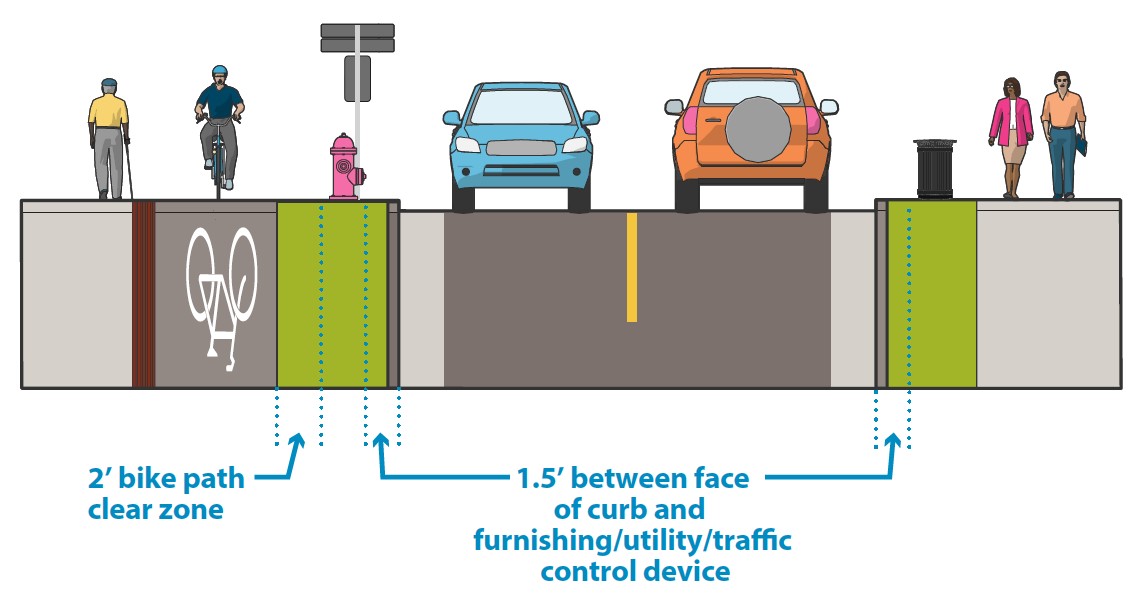3.3F Utilities and signs
Search Content
Download PDF
Print Guide
Introduction
The boulevard and furnishing zone includes a number of important above ground utilities and traffic control devices, including fire hydrants, traffic signals, streetlights, service cabinets, utility poles, waste receptacles, parking meter pay stations, signs, and bicycle racks.
See also guidance for: street lighting, bicycle and micromobility parking, and transit stops.
Figure 3.3F.1:
Utilities and signs dimensions
Design Considerations
|
Clearance to curb |
1.5’ clearance is generally required from the face of curb to utilities and signs, including for fire hydrants, service cabinets, APS pushbutton poles, utility poles, waste receptacles, parking meter pay stations, signs, and bicycle racks. 1’ clearance is used between the face of curb and the edge of the foundation for streetlights. Traffic signals are typically centered 2’ off the face of curb, which means the clearance is a minimum of 1’ to the edge of the foundation. |
|
Location |
Utilities are often included in the corner public use zone (see elements of the sidewalk zone for more details).
|
|
Maintaining pedestrian and bicycle clear zones |
Other than accessible pedestrian signal push buttons, utilities and signs should not be located in the clear corner zone, the pedestrian clear zone, or the bicycle operating area. See sidewalk zone design guidance for recommended pedestrian clear zone widths by street type. |




